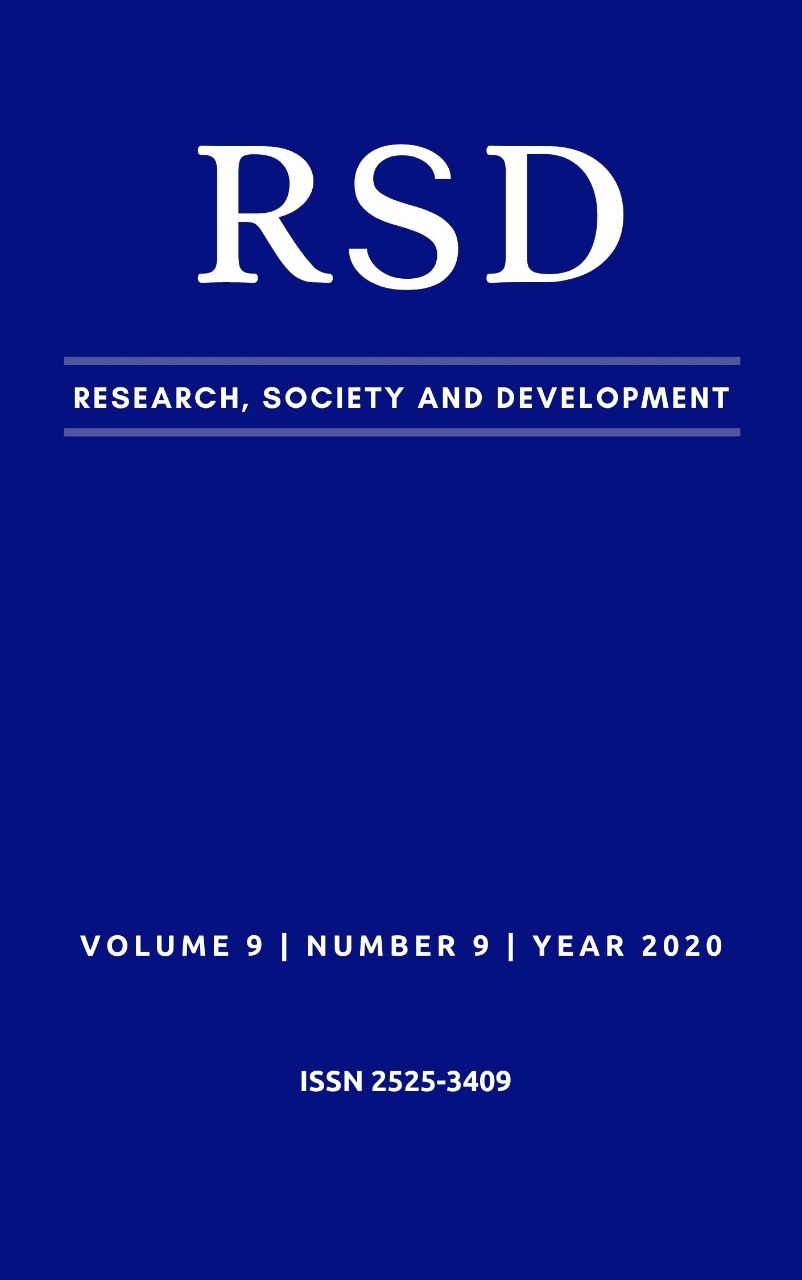Inteligência emocional, áreas da vida profissional e Síndrome de Burnout entre equipes acadêmicas de universidades selecionadas na Etiópia
DOI:
https://doi.org/10.33448/rsd-v9i9.7765Palavras-chave:
Burnout; Vida na área de trabalho; Inteligencia emocional.Resumo
O objetivo principal deste estudo foi examinar a prevalência de burnout entre acadêmicos universitários na Etiópia em relação à inteligência emocional e áreas de fatores da vida profissional. Foi empregado desenho de estudo descritivo de pesquisa, especificamente pesquisa transversal. 375 professores foram selecionados usando o método de amostragem aleatória estratificada proporcional. A amostragem propositiva foi seguida para selecionar 6 universidades e duas universidades de cada geração de universidades. Maslach Burnout Inventory 22 itens da Pesquisa de Educadores, 28 itens da Pesquisa de Áreas de Vida no Trabalho e 33 itens da Escala Breve de Inteligência Emocional (BEIS-10) foram usados para coletar informações dos entrevistados. A relação das variáveis com o burnout foi testada usando coeficientes de correlação de Pearson e teste t de duas amostras. Os achados do presente estudo mostraram que houve nível moderado de burnout nos acadêmicos universitários. A inteligência emocional tem associação significativa em 0,01 e a associação é positiva e fortemente com burnout. A vida na área de trabalho tem associação positiva e muito forte com o nível de burnout entre os professores universitários, o que é significativo em 0,01 teste bicaudal. Finalmente, os órgãos envolvidos devem considerar diferentes orientações para prevenir o esgotamento acadêmico e também é recomendado que os administradores e os educadores utilizem essas descobertas para desenvolver e melhorar o desempenho dos professores e prevenir o início do esgotamento.
Referências
Chan, D. W. (2006). Emotional intelligence and components of burnout among Chinese secondary school teachers in Hong Kong. Teaching and Teacher Education, 22, 1042-1054
Cohen, L., Manion, L. & Morrison, K. (2000). Research Methods in Education. 5th Edition, Routledge Falmer, London.Farber, B. (2000). Introduction: Understanding and Treating Burnout in a Changing Culture. Psychotherapy in Practice, 56 (5), 589-594
Cooper, C. L., Dewe, P. J., O’ Driscoll, M. P ,(2001). Organizational stress: A review and Critique of Theory, Research, and Applications. (Ed.), Thousand Oaks: Sage Publications.
Elton, M. (2001). The Human Relations Movement: Harvard Business School and the Hawthorne Experiments, Harvard Business School.
Evangelia, D., Arnlod, B. B., Wilmar, B. S. (2001) Job demands and job resources as predictors of absence duration and frequency. University Oldenburg, Oldenburg, Germany
Gardner, L,(2005). Emotional Intelligence and Occupational Stress, Doctor of Philosophy theses, Swinbern University.
Goleman, D. (2004). The Emotionally Intelligence Workplace, Jossey-Bass, San Francisco
Hassan, D., & Ali Akbar, N. (2011). Studying the Relations between Emotional Intelligence and Occupational Stress: A Case Study at Payame Noor University. Petroleum-Gas University of Ploiesti BULLETIN, 63(2). Economic Sciences Series Tehran, Iran
Hastings, & Bham (2003). The Relationship between Student Behavior Patterns and Teacher Burnout School Psychology International February 2003. 24, 115-127
Jackson, S. E., Schwab, R. L., & Schuler, R. S. (1986). Toward an understanding of the burnout phenomenon. Journal of Applied Psychology. 71(1), 630-640.
Bean J., & Shevawn B. E. (2001). The psychology underlying successful retention practices. Indiana University, Bloomington
Lockwood, N. R., (2003), Work life balance: Challenges and solutions, HRMagazine, 48(6), S1, Society for Human Resource Management, Alexandria
Lyusin, D. B. (2006). Emotional intelligence as a mixed construct. Journal of Russian and East European Psychology. 44 (6), 54-68.
María Luisa Avargues Navarro, Mercedes Borda Más, 2010. Job stress and burnout syndrome at university: A descriptive analysis of the current situation and review of the principal lines of research. Annuary of Clinical and Health Psychology. 6, 67-72.
Maslach & Jackson’s (1981). The measurement of experienced burnout. Journal of Occupational Behavior, 2, 99–113.
Mayer, J. D., Salovey, P., Caruso, D (2007). Models of emotional intelligence, in R. Sternberg (Ed.), Handbook of Intelligence. Cambridge, Cambridge University Press.
Patricia, S., Matthews, A., & Coyne, I. (2013). Stress and stressors in the clinical environment: a comparative study of fourth-year student nurses and newly qualified general nurses in Ireland. Blackwell Publishing Ltd.
Reyes, M., & Salovey, P. (2010). Emotional regulation ability, burnout, and job-satisfaction among British secondary-school teachers. Psychology in the Schools, 47(4). Retrieved from www.interscience.wiley.com.
Salaski, M., & Gartwright, S. (2002). Health, performance and emotional intelligence: An exploratory study of retail managers. 8, 63 68. Retrieved from http:// www.interscience.Wiley.com.
Schaufeli, W., B., & Peeters, M. C., W. (2000). Job stress and burnout among correctional officers: A literature review. International Journal of Stress Management. 7(1).
Gardner, W. L., Avolio, B. J., Luthans, F., May, D. R., & Walumba, F. O. (2005).Can you see the real me? A self-based model of authentic leader and follower development. The Leadership Quarterly, 16(3), 343–372, 2005.
Downloads
Publicado
Como Citar
Edição
Seção
Licença
Copyright (c) 2020 Nigatuwa Worku Woyessa; Tigist Admas Gelaw

Este trabalho está licenciado sob uma licença Creative Commons Attribution 4.0 International License.
Autores que publicam nesta revista concordam com os seguintes termos:
1) Autores mantém os direitos autorais e concedem à revista o direito de primeira publicação, com o trabalho simultaneamente licenciado sob a Licença Creative Commons Attribution que permite o compartilhamento do trabalho com reconhecimento da autoria e publicação inicial nesta revista.
2) Autores têm autorização para assumir contratos adicionais separadamente, para distribuição não-exclusiva da versão do trabalho publicada nesta revista (ex.: publicar em repositório institucional ou como capítulo de livro), com reconhecimento de autoria e publicação inicial nesta revista.
3) Autores têm permissão e são estimulados a publicar e distribuir seu trabalho online (ex.: em repositórios institucionais ou na sua página pessoal) a qualquer ponto antes ou durante o processo editorial, já que isso pode gerar alterações produtivas, bem como aumentar o impacto e a citação do trabalho publicado.

